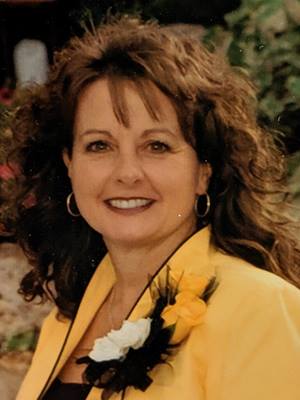

Jollee Lloyd, RN
After meeting with a patient and reviewing his health history recently, physical therapist Kristin Nelson felt worried that something deeper was wrong. Kristin escalated her concerns to Jollee Lloyd, RN, a nurse care manager at TOSH - The Orthopedic Specialty Hospital. Together, a team of caregivers confirmed the patient had a plan to end his life. They helped him get transferred to an inpatient behavioral health unit—likely saving his life.
“While a lot of my patients are worn down from stresses during the pandemic, this patient had a deeper level of sadness,” Kristin says. “I had a few clues from looking at his health history, but it was our conversations about all the difficult changes in his life that made me feel he was in a worrying place.”
During the patient’s second visit with Kristin, he confided in her that he hated his life. She noticed he’d been through a lot in a few weeks, including the inability to do the activities he loved due to his injury.
“My overall goal is to help patients have the support they need for a good recovery,” Kristin says. “I review each patient’s chart in iCentra and look for the patterns that have brought them to me. Recovery is so fast these days, often my patients are here for just a day. When they come to me, we’re strangers and yet I need them to trust me.”
Kristin says she felt concerned about the patient both physically in his recovery and emotionally based on his mental state. She left a voicemail with Jollee, sharing her concerns.
Jollee says when she got the message she was surprised because she had no other indication that he might be at risk.
“When a patient comes in, they’re asked risk assessment questions related to things like drug abuse and mental health,” Jollee says. “It’s a well-rounded assessment, and the patient answered no to everything. So, when I was initially planning his discharge, I didn’t see he needed anything other than physical therapy and his outpatient equipment.”
Jollee says after Kristin’s message she followed up and looked at his chart again. She saw a past history of anti-depressants, but noted he’d told caregivers he was currently doing fine. She also asked his nurses how he’d had been doing, and again there was nothing out of the ordinary. In fact, the patient’s family was looking forward to picking him up that afternoon to go home.
Jollee then took a moment to meet with him. After reviewing his assessment questions with him and still not finding anything based on his answers, she got directly to the point.
“I just stopped and looked up at him and said, ‘Let’s talk about you and how you’re doing,’” she says. “I wanted to address what Kristin had observed. I kept thinking, ‘Why would she have called me and shared her concerns if there wasn’t a reason?’”
The patient told Jollee he was bummed out. Then she asked him if he currently felt depressed or had thoughts about suicide. “He At that moment he told me yes,” she says. “And then I asked him if he had a plan.”
His next statement was unexpected, says Jollee, who was getting the same feeling as Kristin that something wasn’t right. “He went into a very precise, detailed explanation of his plan, including where, when, and how.”
Jollee quickly referred him for a crisis evaluation via a telehealth crisis worker, and the team determined he needed inpatient behavioral health treatment.
“Initially, he didn’t want to go, but we helped him understand that he’d have more access to help and a faster recovery if we could transfer him directly,” says Jollee. After some discussion, the patient agreed to go.
Nurse practitioner Gaylinn Breeze says, “The patient was in an unstable, unsafe situation. Jollee helped him see that we were looking out for him and cared about him. Jollee did a really beautiful job. Afterward I came up to her and gave her a big hug.”
“His family was grateful that somebody cared enough to listen and get him into care,” Jollee says. “They had no idea the magnitude of the situation. When they understood what they could’ve been facing, they thanked us over and over.”
Jollee adds that it was a team effort. “If Kristin hadn’t escalated her concerns to me, we would’ve missed it,” she says.
“Each caregiver who saw this person along his journey and documented him helped, even if they don’t realize it,” says Kristin. “Sometimes you might add information about a patient that might not seem relevant at the time, but everyone’s voices can add up. It helped us to have a reason where we could investigate more and get this patient the help he needed.”

